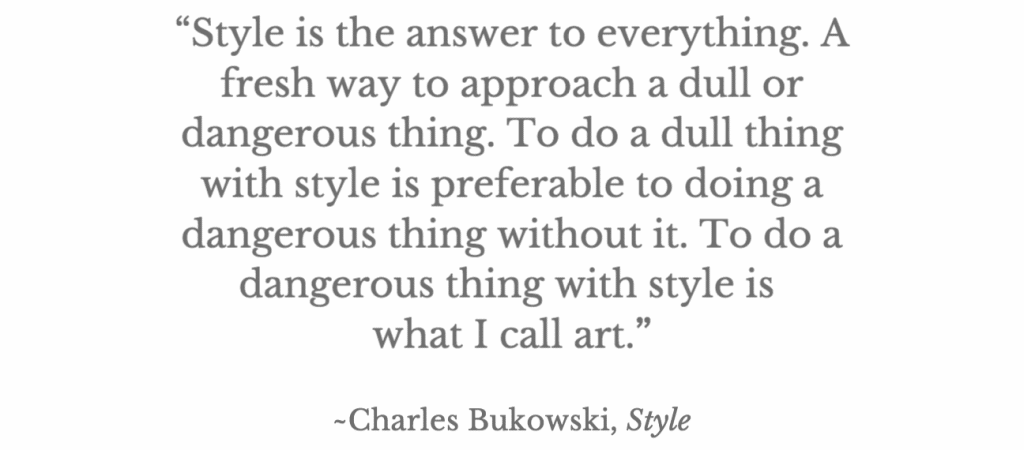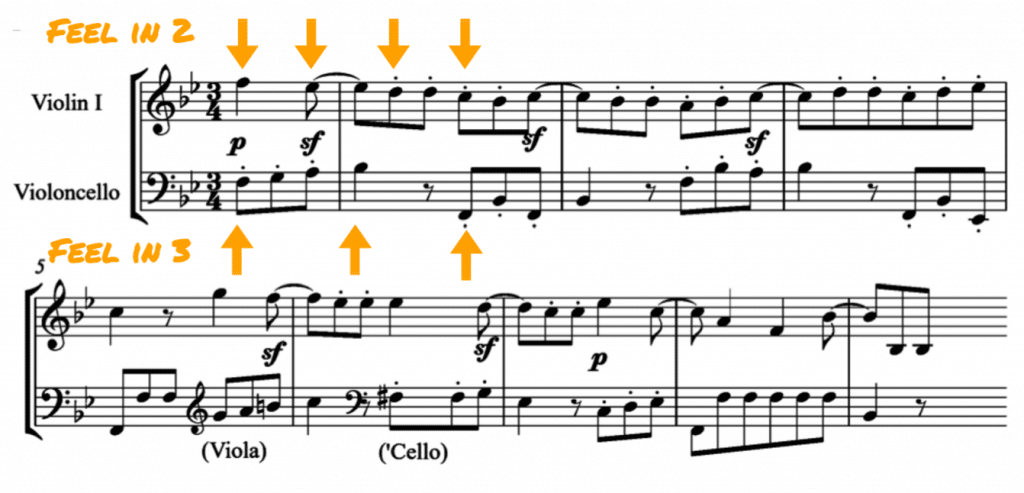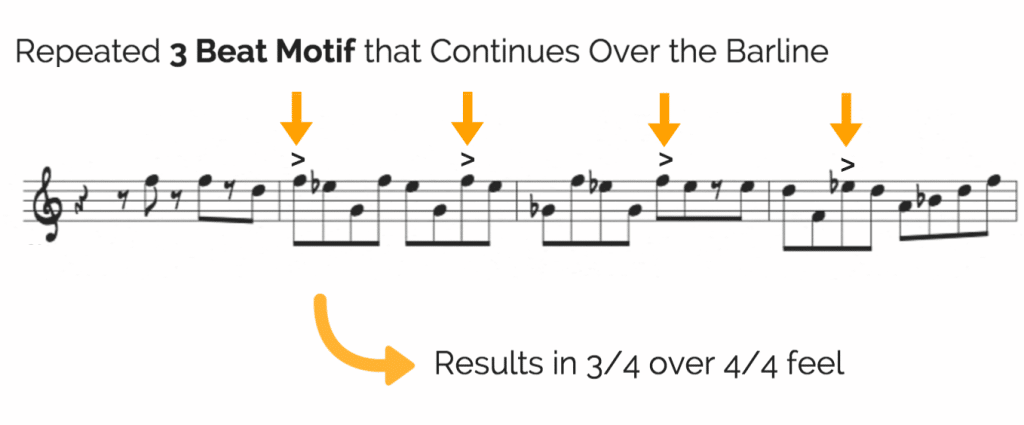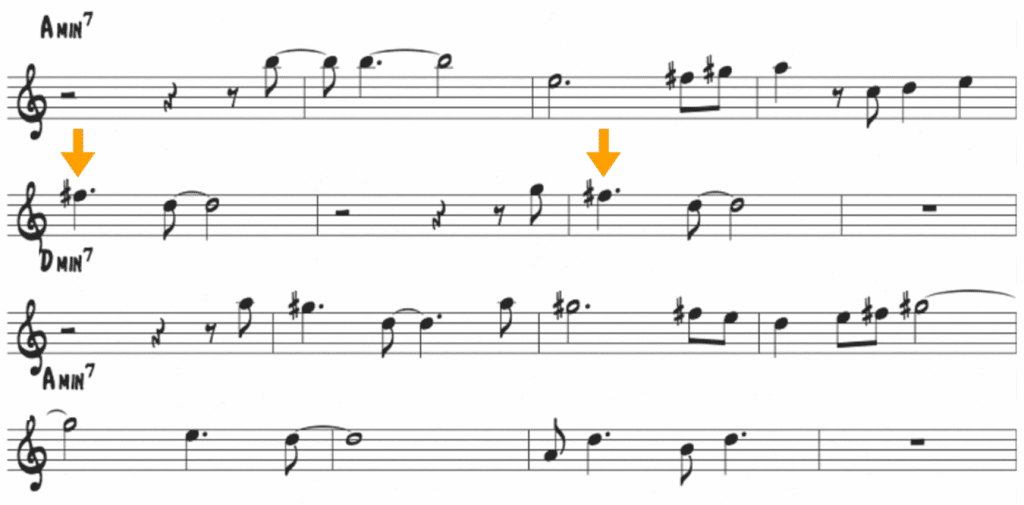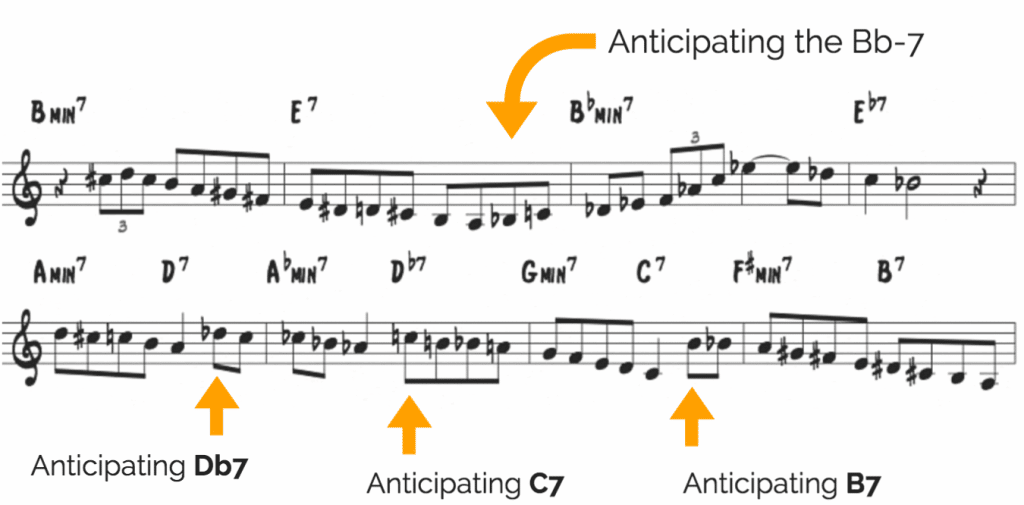Open up a music theory book and you’ll likely find pages and pages of definitions. Terms like apogituras, retograde inversions, mordents, hemiolas, turns…Good information, but not exactly stuff that you’d want to put into your next solo. I mean what did stuffy old composers know about improvising anyway?
But before you dismiss all that tedious theory terminology, you should know this…
Some of the best improvisers have used these very musical devices to create their distinctive style that we love to listen to today.
And when it comes to your style, you should too…
Why style is important
There are a ton of solos out there that contain all the right notes and scales. But hardly any solos that have style.
That’s because much of jazz education has become centered around music theory and scales. What notes you play over a G7 chord, what scales to use on the bridge to rhythm changes…
And as a result you get a lot of solos that are fast, technical, and full of the “right notes.”
…but lacking personality and musical style.
However, take a listen to the most famous jazz records and you’ll notice something there that goes beyond the notes…
The elements of style
Great musical style doesn’t depend on a genre of music, a particular time period, or even a location.
It depends on the things you do in your solo to grab the ear of the listener. And there are certain devices that add this interest to a musical line, that grab your attention and draw you closer into the music…
The musicians that we remember have this timeless quality, a style that goes beyond the note choices they make or the tunes they play…
Below we’ll explore 7 stylistic elements that get beyond the theory and notes.
Musical devices that have been used for hundreds of years by composers like Bach and Beethoven and many more. Devices that will give your own musical language a greater sense of character and appeal…
1) Ornaments: trills, mordents, and turns
Look back to the Baroque and Classical periods and you’ll find countless examples of ornamentation. Trills, mordents, and turns that added interest and life to otherwise common lines.
For example take a listen to a excerpt from Haydn’s Piano Sonata No. 52 in Eb Major:
From trills utilizing an upper neighbor to mordents utilizing a lower neighbor to turns that use both, ornamentation has been a key stylistic ingredient from the music of Bach all the way to today – and jazz is no exception.
Just take a listen to the melody of Dizzy Atmosphere:
Simple trills and turns can give an otherwise plain line some personality and this is exactly why many great improvisers utilize this stylistic technique. For instance, listen to how Clifford Brown uses this ornamentation in his solo on Joy Spring:
In your own playing, experiment with turns, trills and mordents in your lines to get away from predictable eighth note lines and create more melodic interest and musical momentum.
2) Hemiola: Odd against Even
A hemiola is generally defined as a rhythmic feeling of 2 against 3 or 3 against 4, or it can simply be a musical phrase written in one meter and accented in another.
For example, listen to the opening of the Scherzo in Beethoven’s String Quartet Op. 18 No. 6:
As you can see the Violin 1 line implies a 3/4 feel (three groups of 2) while the cello implies a 6/8 feel (2 groups of 3 notes). This rhythmic ambiguity made this piece stand out.
Now check out how Louis Armstrong uses a hemiola in his solo on Struttin’ with some Barbecue:
Just like harmonic dissonance can add tension to a solo rhythmic dissonance in the form of hemiolas can create tension and interest to your solos.
A more modern example of this can be found in the work of Brad Mehldau’s trio.
Check out the opening of his tune Boomer, written in 7/4. The piano starts with a figure in seven and the drums enter with a pattern that implies 4/4:
For a more in-depth exploration of this tune, check out Brad’s writing here.
3) Inversion: variation
Any music student that has studied 12 note tone rows knows about inversion.
For instance take the opening from Arnold Schoenberg’s Op. 42:
The melodic material for this melody comes from the tone row below:
And to create new material within his 12 tone system he used inversion, retrograde motion, and retrograde inversions of the original line (in various “keys” or starting pitches). Below is the inversion of the original line (I5):
The same approach can be used for your own practice of melodic material – by inverting the intervallic content or shape of a line you can create an endless source of new melodic information.
Instead of the same old routine, try inverting and varying those familiar lines to create new shapes and sounds.
Apply this approach of inversion and variation to:
- Scales
- Technical exercises
- Melodic Patterns
- Transcribed language
- Chord Voicings
Use the four directions and see what you can come up with!
4) Motif and sequence
The stylistic practice of motif and sequence has been used by nearly every composer that has set pen to paper.
And the same is true for the greatest improvisers…
Regardless of the style of music, the human ear latches onto musical patterns and sequences It’s a logical path for the listener to follow and it sets the stage for development and variation
A sequence can be rhythmic, harmonic in nature, or a shape that repeats. A great example is the opening to Sonny Rollins solo on St. Thomas:
Notice how he takes a simple descending perfect 5th and develops it into the foundation of his solo. As a listener you’re not thinking about the chords or scales, you’re thinking about music – and this is exactly what Sonny is playing.
“Eclecticism is the word. Like a jazz musician who creates his own style out of the styles around him, I play by ear.”~Ralph Ellison
Now let’s take a listen to Michael Brecker. Check out how he uses a motif in a more subtle way to start his solo on Nothing Personal:
Instead of the usual scales or licks, try to start you next solo with a melodic motif and see where it takes you.
5) Anacrusis: pick-ups and anticipation
Anacrusis is simply a fancy word for a pick-up.
And as an improviser you can use this technique to anticipate the harmonic and melodic high points of your solo. Because after a while, resolutions on bar lines can become predictable and uninteresting,
Listen to how Sonny Stitt anticipates the arrival of chords on the bridge or the Eternal Triangle:
Experiment with this technique in your own solos by anticipating chords in tune or creating “pick-up” notes in your lines that lead to a new chord or key center.
6) Appogitura: approach notes
An appogitura is basically an emphasized grace note or approach note. And this is something that you’ll find many accomplished improvisers using in their solos.
Check out this post for 5 ways to utilize approach notes in your own solos.
And take a listen to how Michael Brecker utilizes these emphasized approach notes in his solo on Nothing Personal:
7) Flourish
A flourish or fioritura is a florid or complex embellishment of a melodic line (i.e. a run of notes) that a soloist can include to catch the listener off guard.
Here is an example from a Chopin Nocturne:
Now listen to Louis Armstrong use this technique in his solo on Struttin’ with some Barbecue:
And finally listen to the opening of Michael Brecker’s take on My One and Only Love:
As you can clearly hear, it doesn’t matter if the music is a classical string quartet, a 12-tone composition, an early jazz solo, or the improvisers that you listen to today.
Musical style is the one thing that sets great players and composers apart from the other musicians simply going through the motions.
And it’s an essential piece of your musical development. Work on incorporating these 7 stylistic elements into your practice as you continue to shape your musical voice.

